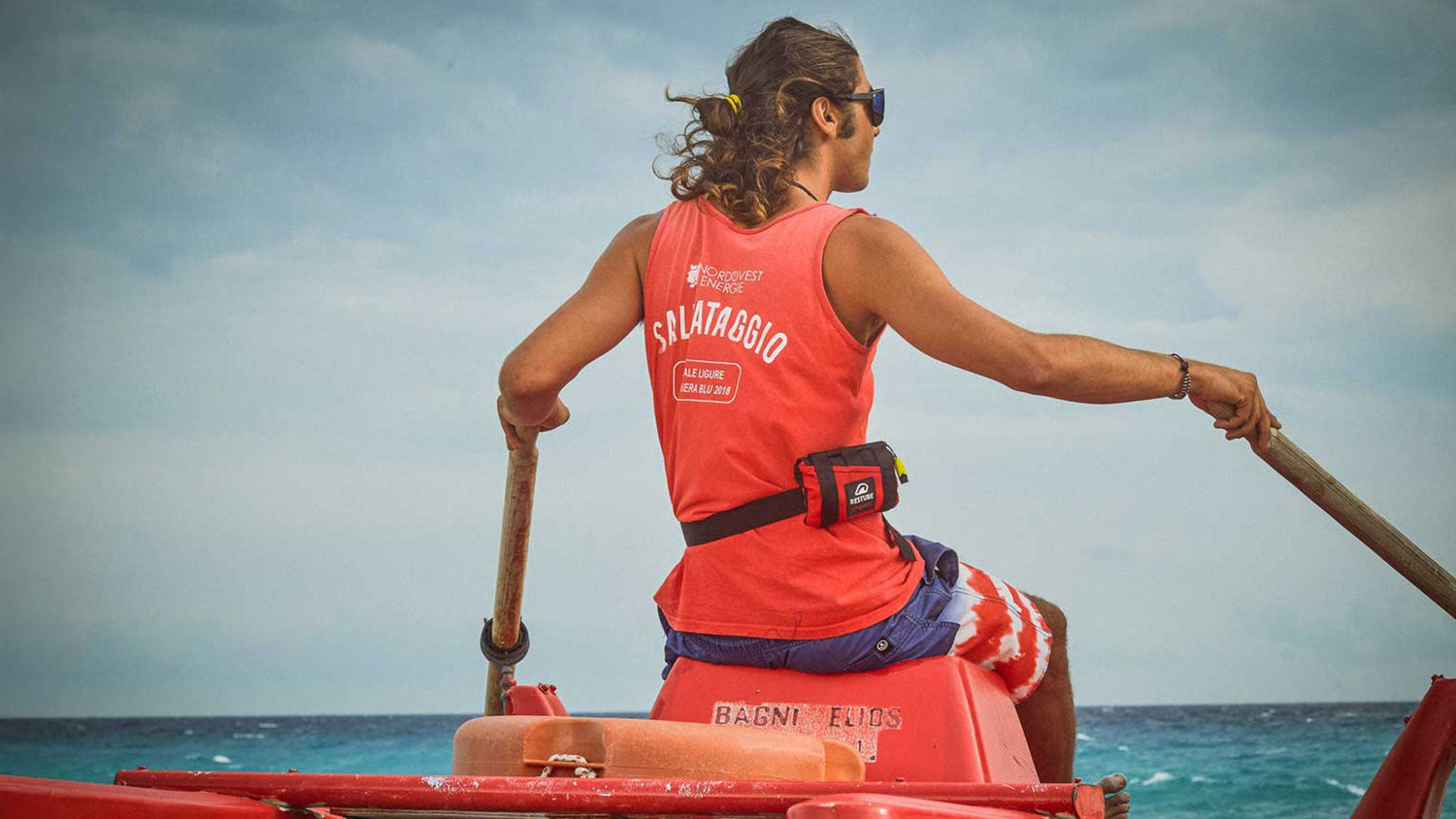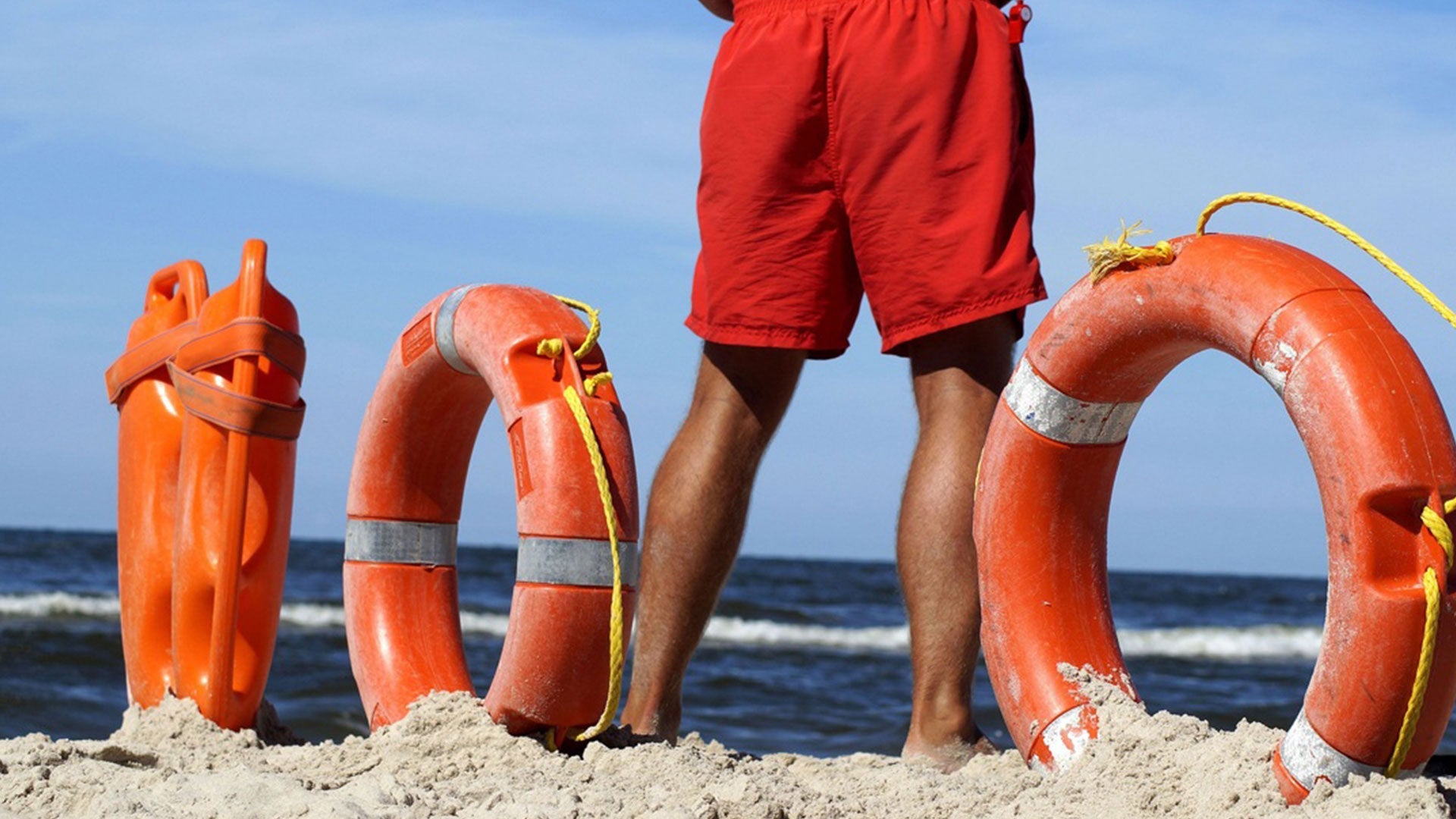How to become a certified lifeguard?
Are you interested to know how to become a certified lifeguard? In this article we will inform you about lifeguard training opportunities, requirements, and costs. We also spoke to Clemens Menge from the DLRG Konstanz. In our interview Clemens talks about his training as a lifeguard and why volunteer lifeguards are so important.
First of all, being a certified lifeguard does not mean lying on the beach all day and being paid for doing so. Rather, it is a strenuous activity, because a lifeguard bears responsibility and must constantly and with the utmost attention keep an eye on the activities in the bathing area. Only by doing so can he quickly identify an emergency situation and react accordingly.
According to Wikipedia: Officially, lifeguards are trained individuals who have been given the professional knowledge for recognizing, comprehending, and acting in the event of emergencies on and in the water, and are tested and certified by a lifeguard certificate.

Who is offering lifeguard training in Germany?
The lifeguard training is offered in Germany by 3 organizations.
The training of lifeguards is one of the core tasks of the DLRG. From 1950 to 2018, the DLRG has passed more than four and a half million lifeguard tests.
What does the training as a lifeguard entail?
Training as a lifeguard is regulated uniformly in Germany. It contains a practical and theoretical part and in both areas an examination must be taken after the completion of the course.
There are three stages of lifeguard training that build on each other:
-
Bronze
-
Silver
-
Gold
The bronze level lifeguard training can already be completed at the age of 12. The badge in silver requires a minimum age of 15 years and the gold level of lifeguard training requires a minimum age of 16 years.

Depending on the color of the lifeguard badge, the lifeguard is entitled to perform certain activities and to take over tasks in and on the water. For example, in order to work in a swimming pool as a bath supervisor, a sliver lifeguard badge is mandatory. By the way, all active rescuers have to refresh their knowledge they learned in the lifeguard classes annually and take the exam again.
Here the DLRG informs about the various DLRG lifeguard trainings and their required examination performances in detail.
Detailed information about the lifeguard course that are offered in your region can be found in the local groups of DLRG. The local groups for the six largest cities can be found here:

What are the prerequisites or qualifications needed to start the training to become a lifeguard?
RESTUBE in conversation with Clemens Menge, DLRG volunteer lifeguard
Restube: You successfully completed your training as a lifeguard a long time ago. Please tell us why you decided to become a lifeguard and what your motivations behind the job of a lifeguard?
Clemens: I grew up in the DLRG Konstanz, on the one hand it was the logical consequence from my training and on the other hand I was beyond excited to get my “Bronze Eagle” and then all the others.
Restube: Where did you do your lifeguard training and who exactly trained you as a lifeguard?
Clemens: I was trained at the DLRG in Konstanz.
Restube: Can you briefly describe the program of the DLRG Lifeguard Training? How long does this take? What does it include?
Clemens: In my time, the training existed of 12 weeks of training and theoretical instruction. Today this is divided. There are still 12 weeks of training in the swimming pool plus an addition of 2 weekends for theoretical instruction. Those included on the one hand the lifeguard theoretical knowledge, dangers in the water, ice accidents, self-rescue, handling of rescue equipment, external rescue and on the other hand a first aid course.
Restube: Do you need any special prerequisites to become a lifeguard? Is a certain physical fitness necessary (and is that being tested?), or do you need another prior knowledge?
Clemens: To become a lifeguard you do not need any previous knowledge nor experience. All necessary knowledge is taught to you during your lifeguard training. You will also get the necessary physical fitness and swimming skills through the lifeguard training. Depending on each person, it might just take a bit longer. Both the theoretical part as well as the practical part and thus personal fitness are part of the final examination.
Restube: Lifeguards often work on a voluntary basis. Can you tell us more about the cost of the training to become a lifeguard?
Clemens: In our case in Konstanz you have to pay for the first lifeguard badge which currently is priced at EUR 90. If you are active in our association afterwards, we will cover all further costs for the following lifeguard trainings. However, each DLRG group regulates their training individually.

Restube: According to statistics (WHO, DRLG etc.) drowning is one of the most common causes of accidents worldwide. And also at the federal level the number of accidents is significantly high. What is your sentiment on the development of “safe bathing”? Have you made any observations yourself?
Clemens: Well, what we have recognized is that in general the level of attention of guardians is waning, and the awareness of danger is generally declining.
Restube: Water sports enthusiasts of all kinds trust Restube (link downwards) and use the Restube buoy as their safety back-up. Are athletes more aware of the dangers in the water? Or do you think “normal bathers” simply underestimate the risks?
Clemens: That’s a good question. Experienced swimmers and water sports enthusiasts are well aware of the dangers and more and more of them use safety systems like Restube. However, for many bathers, we find that they either are not at all aware of the dangers or are very little aware of it. Especially tourists, who are used to swimming in a swimming pool, often underestimate the lake.
Restube: Do you have a final tip for anyone who wants to become a lifeguard?
Clemens: I would like to answer this question with a quote from Walt Disney: “All our dreams can come true if only we have the courage to pursue them”
Restube: Thank you Clemens!Many lifeguards are on duty - but still not enough?
According to DLRG, around 50,000 lifeguards are on duty throughout the year. Nevertheless, there is a lack of volunteers in many places and in some cases public swimming pools cannot even open as usual because of the lack of supervision by a certified lifeguard.
Drowning is a global problem. That a further improvement of safety in the water by, for example, an increase in the number of lifeguards on duty makes sense in Germany is also shown by the many lethal accidents. At least 417 people drowned in Germany last year. “Rivers, lakes or canals are still the main sources of danger. Only comparatively few water points are guarded by lifeguards. The risk of drowning at these spots is therefore significantly higher than on coasts or in public swimming pools,” says Achim Haag, President of the Water Rescuers, describing the situation.

RESTUBE - the water airbag
Helping others in an emergency is the biggest motivation for lifeguards. And yet the most stunning professional savior operation is often not taking place at all. Each individual is therefore called upon to avoid accidents and to increase self-protection with appropriate measures and means.
The greatest safety is not to go into the water if you are not quite sure, the weather is changing or e.g. the swimming area is known for strong its currents. A useful tool for more safety in the water is Restube. Restube offers additional buoyancy in seconds when it is needed. A pull on the trigger is enough and the Restube buoy inflates with the use of a CO2 cartridge.
An additional boost immediately defuses most critical situations. If you lean over the buoy, your head is over water and the airways are free. This creates calm and provides time to recharge your energy, find orientation, rest and, if possible, swim back to shore. The yellow color and elongated shape of the Restube buoy can also help to draw attention to you by waving with it.
Restube is packed extremely small in a non-triggered state and weighs only about 200g. Attached to a belt around the hip or directly to the equipment, you will not even notice Restube, which can be carried along for all activities in and around the water.
An increasing number of lifeguards use the classic Restube as an addition for their rescue equipment – in order to have additional buoyancy with them just in case. Sometimes several people are in danger at the same place. For example, if the child has a problem, the mother wants to help and then the father follows, because the current was stronger than expected. Then just one buoy can be of great help.

Restube lifeguard - in worldwide use by professional lifeguards
The SLRG (Schweizer Lebensrettungsgesellschaft, Swiss Life Saving Society), parts of the DLRG and the Water guard have approached RESTUBE independently with the idea to develop a professional version of the product. After two years of research and development based on the Restube technology, RESTUBE has published a special product for trained professional rescuers in 2016 in form of the Restube lifeguard. The buoy of the RESTUBE lifeguard is the same buoy as the normal Restube with 75N and is equipped with a complete traction system and 2 buckling points, so that it can be placed very easily around the body of the rescued person and fastened by carabiner and the means of 4 eyelets. Today, more than 6,000 Restube lifeguards are in daily and successful use and support lifeguards worldwide.
Christopher Fuhrhop, founder and CEO of RESTUBE: “The trust of lifeguards in our technology, thousands of successful rescues operations and more and more reports of saved lives from all over the world serves as an incredible motivation for us! One of the professional testers described the Restube idea very aptly: “The most effective safety system is the one that you always carry with you.” Under this motto, we continue to do everything we can to improve Restube.”



